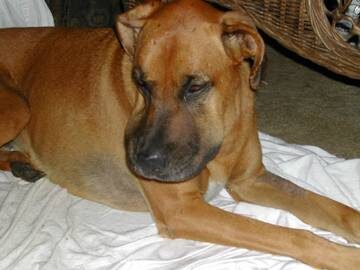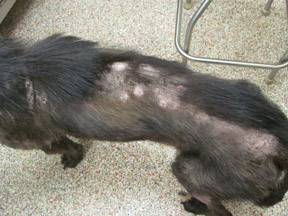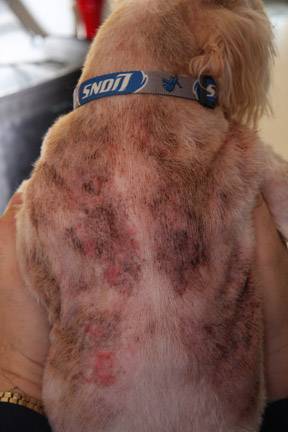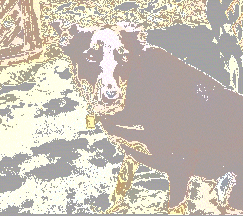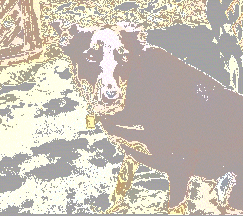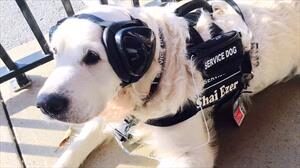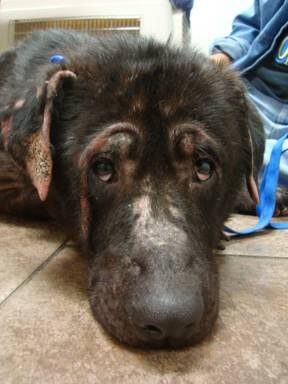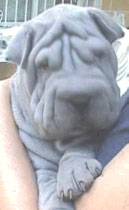Watching your dog experience a seizure is both frightening and disturbing, especially if it is unexpected. There is collapse, involuntary movement, and often loss of consciousness followed by a period of daze and disorientation. Prolonged seizure activity constitutes an emergency. You are presumably reading this because your dog has had some kind of involuntary fit and you want to understand what it means and what can be done to prevent future episodes so let’s cover some basics.
What is a Seizure and How Do you Know if your Dog has Had One?
A seizure results from excessive electrical activity in the cerebral cortex of the brain. The electrical activity starts in one area (called the seizure focus) and spreads in a process called kindling. Classically, the patient loses consciousness, collapses, becomes stiff at first and then begins paddling or struggling but seizures can take many forms. Any involuntary behavior that occurs abnormally may represent a seizure. Seizures are classified into several categories.
Generalized (Grand Mal) Seizures
This is the most common form of seizure in small animals. The entire body is involved in stiffness and possibly stiffness/contraction cycles (tonic/clonic action). The animal loses consciousness and may urinate or defecate. See a grand mal (violent) seizure.
Focal Seizures (Also Called Partial Motor Seizures)
Focal seizures involve involuntary activity in only one body part. Consciousness may or may not be impaired. A classic example would be the “chewing gum” fit that frequently is seen in canine distemper infections but can be seen in other seizure disorders as well. See a chewing gum seizure in a Maltese with mild epilepsy.
Psychomotor Seizures
Psychomotor seizures are focal seizures where the seizure is more like an episode of abnormal behavior than an actual convulsion. The pet’s consciousness is disturbed by this type of seizure as the pet appears to be hallucinating or in an altered state. The seizure may include episodes of rage or aggression where the pet does not recognize family members or may be as simple as a brief episode of disorientation or spacing out. Fly-biting is an example of a psychomotor seizure. See a psychomotor seizure.
Seizures (neurological events) are often difficult to tell from fainting spells (cardiovascular events). Classically, true seizures are preceded by an aura or special feeling associated with a coming seizure. As animals cannot speak, we usually do not notice any changes associated with the aura. The seizure is also typically followed by a post-ictal period during which the animal appears disoriented, even blind. This period may last only a few minutes or may last several hours. In contrast, fainting animals are usually up and normal within seconds of the spell, with no post-episode disorientation.
Post-ictal disorientation is the hallmark of the seizure.
Causes of Seizures and Diagnostics
There are many potential causes of seizures: toxins, tumors, genetic disease such as epilepsy, infections, even scarring in the brain from past trauma. Seizures resulting from metabolic problems or toxicity (i.e. when the brain itself is normal) are called reactive seizures. Seizures resulting from identifiable brain abnormalities are called structural seizures. Seizures for which no clear cause can be found are called primary seizures and the patient is said to have epilepsy.
It turns out that dogs of certain age groups tend to have common causes for their seizures. This means that certain diagnostic tests are especially important in dogs of one age group while other tests are going to be more important for dogs in another age group. Here are some basic concepts concerning how age is an important consideration:
- Reactive Seizures: Seizures resulting from metabolic problems or toxicity (i.e., when the brain itself is normal).
- Secondary Seizures: Seizures resulting from an identifiable brain abnormality.
- Primary Seizures: Seizures for which neither of the above problems apply (i.e., when no cause can be found).
Animals Less than Age Six Months
In this age group, seizures are usually caused by brain infections. For dogs, the most common infectious diseases would be canine distemper or a parasitic infection such as with Toxoplasma or Neospora. Analysis of cerebrospinal fluid, obtained by a tap under anesthesia, would be important though now that PCR technology is available for detecting DNA of infectious agents, less invasive testing may be recommended depending on the infectious under suspicion.
Animals Between Ages 6 Months and 6 Years
The most common reason for a dog, particularly a purebred dog, to begin having seizures in this age range is genetic epilepsy (also called primary epilepsy.) Epilepsy is diagnosed when no other cause of seizures can be found, there are no neurologic symptoms between seizure events, and the first seizure episodes begin in this age range. Usually basic blood work is done to rule out metabolic causes of seizures but more sophisticated and expensive testing (such as advanced brain imaging) is forgone as the presentation is fairly classic.
Schnauzers, basset hounds, collies, and cocker spaniels have two to three times as much epilepsy as other breeds. Labrador retrievers and Golden retrievers are also predisposed to epilepsy but tend to begin their seizures relatively late, closer to age five.
Animals More than 5 Years Old
In this group, seizures are usually caused by a tumor growing off the skull and pressing on the brain (meningioma would be the most common tumor type). Consult your veterinarian about treatment options. Such tumors may be operable or can be treated with radiation if found early. A CT scan or MRI would be the next step. Referral is usually necessary for this type of imaging. For patients where surgery is not an option, corticosteroids may be used to reduce swelling in the brain. Treatment to suppress seizures may also be needed using one of the medications discussed below.
When to Begin Treatment
In 2016, the American College of Veterinary Internal medicine published a consensus statement on this very subject.
If the dog fits into any of these criteria, medication to suppress seizures should be initiated:
- When seizures occur in clusters, which is more than 3 seizures within a 24-hour period.
- When two or more isolated seizures occur within a 6-month period.
- If a seizure has lasted 5 minutes or more.
- If the seizures or their post-ictal disorientation periods are particularly severe.
- If the dog has a visible structural lesion on a CT, MRI or even a radiograph.
- If the dog has a history of brain injury or trauma.
- It should be noted that the German shepherd dog, border collie, Australian shepherd, golden retriever, Irish setter, and Saint Bernard breeds are notorious for difficulty in seizure control. It is best not to wait for frequent seizures in these cases as each seizure makes the next more difficult to control. Often medication is started in these individuals after the first seizure. The more seizures the patient experiences, the more difficult control becomes in the future.
Treatment Choices: Medication
There are currently four main medications that are used in suppressing seizures in dogs in the United States: phenobarbital, potassium bromide, levetiracetam, and zonisamide. If adequate control cannot be achieved with one medication, often two or even three are combined. The ideal first line anti-convulsant medication is effective, reasonably priced, convenient to administer, and has limited side effects potential. Most dogs are started on either phenobarbital or potassium bromide but we will take a moment to review the pros and cons of all four of these medications.
Phenobarbital
Phenobarbital has been the first-line therapy for canine seizure control for decades as it is effective, reasonably priced, and can be given twice daily which is relatively convenient. When dogs with seizures are started on phenobarbital, approximately 31 percent of them can be expected to become seizure-free. Approximately 80% of dogs on phenobarbital will experience a greater than 50% decrease in seizure frequency. Approximately 20-30% of dogs on phenobarbital will require a second anti seizure medication to achieve acceptable seizure control.
The downsides are phenobarbital use stem from its side effects potential. Phenobarbital blood levels need to be periodically monitored as higher levels are associated with the development of liver disease. The phenobarbital dose must maintain the phenobarbital blood level within a safe therapeutic range and be adjusted accordingly. There is some expense associated with such testing.
Side effects of the drug include sedation, which is usually temporary during the first one to two weeks of medication use and wanes as the patient’s body adjusts. The patient is likely to be unusually hungry and thirsty on phenobarbital. These side effects can be objectionable. Some lab test changes are associated with phenobarbital usage and need to be recognized as such. Phenobarbital is removed from the body by the liver so good liver function is essential for phenobarbital use and phenobarbital can alter the metabolism of numerous other medications.
Potassium Bromide
Potassium Bromide was used for human seizure control nearly 100 years ago but was eclipsed by the development of phenobarbital. It turns out that while phenobarbital may be a superior seizure drug for people, potassium bromide may be superior for dogs. When dogs with seizures are started on potassium bromide, 52 percent of them can be expected to become seizure-free. Approximately, 70 percent will have greater than 50 percent reduction in seizure frequency.
Potassium bromide is associated with pancreatitis and probably should not be used in patients with a history of that disease. Potassium bromide takes many months to reach a stable blood level which could leave the patient vulnerable to seizures during that time. As with phenobarbital, there are monitoring tests associated with potassium bromide use and sedation is a side effect.
Levetiracetam (Keppra®)
Levetiracetam is popular for refractory epilepsy in dogs because it has been shown to be fairly reliable and has minimal side effects potential. It appears to work best in combination with other seizure medications rather than as a sole therapy but many dogs are able to use it as a single agent. There are no monitoring tests recommended for its use and an extended-release formula allows for twice-daily use.
Zonisamide (Zonegran®)
Zonisamide is a sulfa class anti-seizure medication that is rapidly becoming a first-line treatment choice but might also be used to supplement more traditional therapies. Because it is a sulfa, it is vulnerable to the side effects associated with sulfa antibiotics: mostly tear production/dry eye issues but also some immune-mediated reactions. (Sulfa side effects are reviewed more completely in our pharmacy library under the sulfa antibiotics such as trimethoprim sulfa). Zonisamide can be used twice a day in dogs but lasts long enough in the cat to possibly be used once daily.
Treatment Choices: Diet
In 2017, a veterinary therapeutic diet designed to supplement anti-seizure medications was released. The diet uses medium-chain fatty acids as a fat source (fats come in short, medium, and long-chain types which relate to the length of their chain of their carbon chain) and it turns out that MCTs have a direct anti-seizure effect. Dogs that were not able to achieve full seizure control with medication were able to improve control or achieve total control after a 3-month trial on this diet. It is not meant to replace medications by any means, just to give them a nutritional boost.
Seizures at Home (When is it an Emergency?)
A Single Breakthrough Seizure
It is a lucky pet that never has another seizure after beginning medications, but an occasional breakthrough seizure (as disturbing as it may be to watch) is rarely of serious concern. In most cases, one can simply give an extra dose of the oral anti-seizure medication that has been in use and consider the episode over with. The veterinarian should be appraised of the situation and the medication regimen evaluated to see if adjustments should be made to prevent further breakthrough seizures in the future.
A Second Breakthrough Seizure within 24 Hours
If a second seizure occurs within 24 hours, one might consider bringing the pet to the vet’s office for a “seizure watch” (which means the pet can receive medication to interrupt any further seizures) as well as for re-evaluation of the current medication protocol.
Since emergency care can be expensive, one might consider rectal administration of diazepam (valium®) as a means of first aid and tiding the pet over until one’s regular veterinarian is available. In anticipation of late-night seizing, one can request a set-up for rectal diazepam to keep on hand. The injectable product is delivered rectally with a special syringe that can be kept at home. The rectal route avoids any danger of being bitten while trying to administer medication.
Recently compounding pharmacies have been able to produce diazepam rectal suppositories which may be easier to use than the syringe method, however, absorption rates are unknown with these products and most neurologists prefer using the injectable product. Rectal diazepam administration has been used successfully for many years in epileptic children; the technique has adapted well to veterinary patients. Diazepam can also be given nasally but there is a greater chance of being bitten.
It is important not to put yourself in danger around a seizing pet. Involuntary jaw motion may bite you and in the period of post ictal disorientation, the pet may not recognize you and may snap.
As mentioned, an isolated seizure at home probably does not require more than staying out of the way and keeping the pet from hurting himself.
That said, there are some emergency situations:
- Seizure activity non-stop for five minutes or more.
- One seizure after another repeatedly.
Either of these situations is called “status epilepticus” and is a “drop-what-you’re-doing-and-rush-the-pet-to-the-vet emergency.
- More than 3 seizures in a 24-hour period
This is considered “cluster seizuring” and definitely warrants seizure watch in a hospital setting.
Can Seizure Medication be Discontinued Eventually?
While there is some risk to discontinuing seizure medications, this may be appropriate for some patients. Dogs should be completely seizure-free for at least a year before contemplating stopping treatment. In breeds for which seizure control is difficult, it is probably best never to stop medication (German Shepherds, Siberian Huskies, Keeshonds, Golden retriever, Irish Setter, St. Bernard). Phenobarbital is a medication that cannot be suddenly discontinued; if you are interested in discontinuing seizure medication, be sure to discuss this thoroughly with your veterinarian.
Other Information
The Epilepsy Genetic Research Project
Veterinary neurologists at several universities are looking for a genetic answer to epilepsy. They seek DNA samples from epileptic dogs and their close relatives if possible.
Canine Epilepsy Network
Affiliated with the Veterinary School at the University of Missouri at Columbia, this site reviews canine seizure disorders, treatment, history and more.



